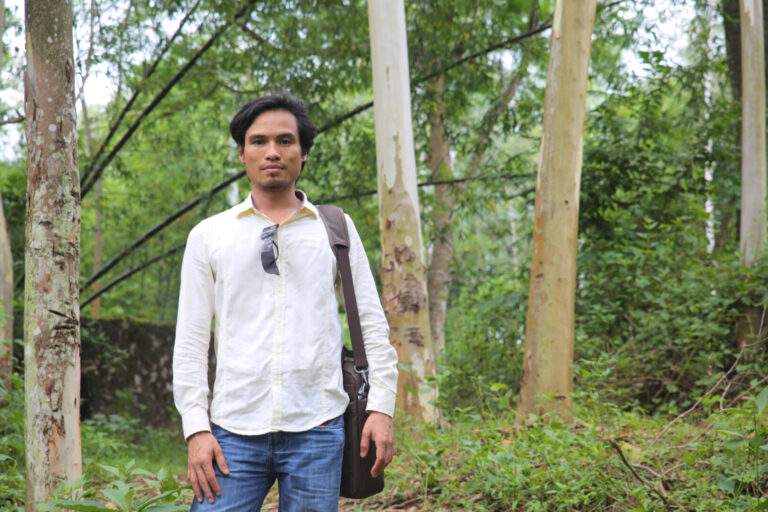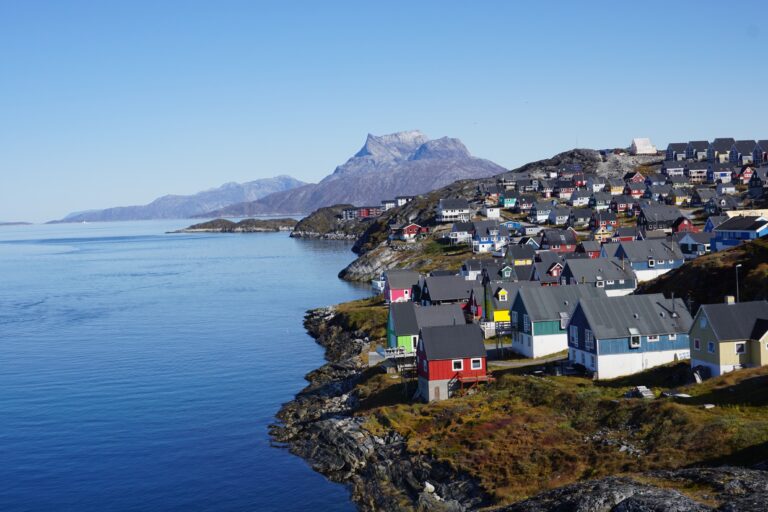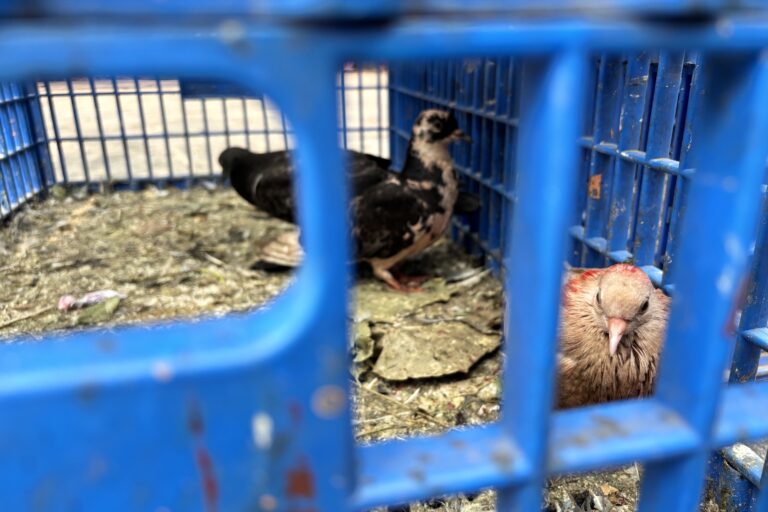- Attacks on indigenous Kaiowá communities in the Brazilian state of Mato Grosso do Sul at the start of the year have highlighted a long-running campaign of persecution and growing violence against the group.
- A Jan. 2 arson attack on a house of worship in the Kaiowá community in Rio Brilhante municipality was the second of its kind in the region in less than six months; it’s still unclear whether the attack was committed by outsiders or was the result of an internal rift between villagers practicing traditional beliefs and those who have converted to Christianity.
- In Dourados municipality, security guards from private ranches mounted an attack on a community of some 100 Kaiowá families inside the Dourados Indigenous Reserve from Jan. 2-3, prompting the deployment of the National Public Security Force to Mato Grosso do Sul.
- The state has a homicide rate among indigenous people that is three times the national average. Land conflicts are seen as the key driver for the violence here, where indigenous territory is fast being lost to monoculture plantations and cattle ranches, and is also being subsumed by growing urban areas.

The start of 2020 has been marked by a series of attacks against indigenous Kaiowá communities in Brazil’s border region with Paraguay, part of a long-running and increasingly violent campaign for control of their land.
In the early morning hours of Jan. 2, a group of as-yet-unidentified invaders set fire to a community house of worship in the village of Laranjeira Nhanderu, home to around 80 indigenous people, in the municipality of Rio Brilhante. The arsonists fled into the woods, leaving the panicked residents searching for water to extinguish the fire. By the time they managed to put it out, part of the structure was compromised.
Rio Brilhante is an area where the land is under dispute, coveted by agribusiness interests. Here, the houses of worship are the strongest symbol of a people under constant threat from industry in central-west Brazil.
“The Kaiowá make sure to build houses of worship to provide them with more security,” says theologian and historian Graciela Chamorro. “From their point of view, this kind of structure guarantees a locale where ‘the word is germinated,’ which makes them imagine that the non-indigenous respect this place.”
A former professor of indigenous history at the Federal University of Grande Dourados (UFGD), Chamorro has studied the spiritual relations and religious practices of the Kaiowá for more than 30 years. “For the Kaiowá, the houses of worship are where ‘the word sleeps,’ where their tradition is kept alive,” she says.
With the indigenous community in Rio Brilhante rattled, the signals coming from the authorities have not been encouraging. The land in Laranjeira Nhanderu has not been formally ratified and demarcated, which means the community faces difficulties obtaining basic support, even from FUNAI, the federal agency in charge of indigenous affairs.
Much of this is due to a decision made by the federal government in late 2019 that every trip into the field be authorized by the FUNAI president. As a result, support from public officials has been slow to arrive to communities like this. The current president of FUNAI is the former Federal Police superintendent, Marcelo Xavier, a known ally of big ranchers in Mato Grosso state. In August 2019, he denied working on behalf of these ruralists, as they’re known in Brazil, in an interview with the newspaper O Globo.
It’s not clear who was responsible for setting fire to the Kaiowá house of worship. One of the leaders of the group Aty Guasu, the main Kaiowá political organization, accused non-indigenous people of the attack on the sacred site. But there are also internal rifts within the community in Laranjeira Nhanderu, pitting those who follow the ancestral rites against indigenous members who have converted to Christianity, Mongabay has learned.

Worldviews in constant conflict
The attack on Laranjeira Nhanderu was the second of its kind in the region in less than six months. In July 2019, arsonists destroyed a house of worship in the village of Jaguapiru, on the edge of the Dourados Indigenous Reserve. The fire destroyed priceless objects, including a 180-year-old xiru, a type of cross held sacred by the Kaiowá.
The reserve, on the outskirts of a municipality of the same name, is one of the oldest and most populous in Brazil. It’s home to more than 15,000 indigenous peoples — including the Kaiowá, Guarani Ñandeva and Terena — living in precarious conditions in on 3,000 hectares (7,400 acres).
In a statement to Mongabay, the Federal Public Ministry said that after the fire in Jaguapiru, a public hearing on religious intolerance was held at the end of November 2019. The Federal Police, responsible for investigating the case, did not respond to a request for comment by the time this story was published.
The symbolism of these attacks comes on top of already arduous challenges to maintaining indigenous traditions in the region. Foremost among them is the expansion of other religious groups, especially Neo-charismatic evangelical churches.
Christian denominations have been around here since the 1930s, when the Kaiwá Evangelical Mission first arrived in Dourados. Today, that institution is divided into the religious mission, still very influential, and an organization focused on indigenous health. As a service provider, Kaiwá was the subject of accusations of favoritism in million-dollar public tenders, as reported by journalist Maurício Angelo in a 2017 article published by The Intercept Brasil.
“In the 1980s, new churches emerged in the absence of the Kaiwá [Evangelical Mission],” Chamorro says. “The indigenous people go to the congregations in the cities and then they bring the pastors to the reserve. We don’t know much about where the new churches came from, but they arrived all at once.” She says there are around 100 Neo-charismatic churches in the Dourados Indigenous Reserve alone, their abundance serving to exacerbate the internal rifts within the reserve’s inhabitants.
“When I go to the region to talk with leaders and pastors, I ask about [religious] coexistence in the territories. Of course they don’t admit their desire to do away with the traditional practices, but there is a tension, though moderate it may be,” Chamorro says.
More than a decade ago, that apprehension got to the point that the State Public Ministry of Mato Grosso do Sul state, where both Dourados and Rio Brilhante are located, had to intervene. From 2008 to 2010, the ministry developed two “terms of conduct adjustment” (TAC) to ensure that the different congregations respected the traditional indigenous rituals.
The documents were signed by representatives from more than 24 churches and called for the observation of “the cultural freedom of the indigenous villages, respecting all the traditional dances and forms of worship.” The TACs also demanded that they participate in “courses for training, orientation and education” with their leaders and pastors to guarantee “religious freedom at the locale where their congregations, facilities and entities are headquartered.”

National Public Security Force deployed
Later on the same day that the Kaiowá community was fighting put out the fire at the house of worship in Rio Brilhante, another attack flared up on the outskirts of Dourados. Private security guards from nearby ranches mounted an attack on a group of some 100 Kaiowá families, running from Jan. 2-3, in reclaimed areas within the limits of the indigenous reserve. “Reclaimed” lands are those invaded by indigenous peoples in order to apply pressure for demarcation — a process permitted under the Constitution, but paralyzed by the administration of President Jair Bolsonaro.
The group of attackers comprised around 15 armed guards using a modified tractor that the indigenous community called “the big skull.” They also threw a grenade at the villagers; the explosive blew three fingers off the hand of a child who handled it.
There are also allegations that the Department of Frontier Operations participated in the offensive, shooting rubber bullets and bombs. The agency falls under the authority of the Mato Grosso do Sul governor, Reinaldo Azambuja of the PSDB party.
A committee of representatives from the Federal Public Defender’s Office of the Federal Public Ministry and 18 other civil society organizations visited the area to investigate the accusations. On Jan. 10, the public defender’s office sent a letter to the governor, requesting an explanation for the incident.
The document describes how the committee “confirmed the existence of several 22-caliber shell casings, as well as the presence of indigenous people with gunshot wounds,” and that “there is no doubt that the scenario is one of intense conflict.” Contacted by Mongabay, the Department of Frontier Operations sidestepped the question.
The department’s deputy director, José Roberto de Souza, said that “if it had not been for the quick intervention [from the Department of Frontier Operations], more people would have been wounded and perhaps even deceased.” Souza also raised doubts about the victims, saying the department had provided first aid to a “supposedly indigenous person” who had sustained light injuries, adding that “there had been no formal accusation or complaint” about the operation. The state government of Mato Grosso do Sul has not commented.
As in Rio Brilhante, the motive for the attack in Dourados is unclear. Some indigenous people blame it on soybean farmers, while suspicion also surrounds others who stand to benefit from their expulsion from the land.
Since 2002, the urban area of Dourados municipality has expanded; in 2015, the reserve’s surroundings were included in the city limits. This has translated into intensified real estate speculation. Today, a number of developers have their eye on the land around the reserve.
Tensions in Dourados and surrounding areas are mounting, with the Ministry of Justice and Public Safety sending the National Public Security Force to Mato Grosso do Sul. The decision to deploy troops to the municipalities of Dourados and Caarapó for a period of 180 days was published in the Diário Oficial da União, the federal government’s official journal, on Jan. 16.
The dispatch of the National Public Security Force is also in response to the spate of killings of Kaiowá there. The murder rate among the indigenous population in Dourados and surrounding areas was more than three times the national average from 2012 to 2014, according to Federal Public Ministry statistics.
“[It is] higher than the rate in Iraq, for a population subjected to an extreme level of violence,” says federal prosecutor Marco Antônio Delfino de Almeida of the Federal Public Ministry in Dourados. According to the agency, indigenous residents have an almost 400% greater chance of being murdered than non-indigenous people in the rest of the state.
One of the worst recent spates of violence in Dourados occurred in June 2019: six indigenous people were murdered in the second half of that month alone.
The threat of physical violence isn’t the only one facing the Kaiowá in the region. In late January this year, the Bolsonaro administration, via FUNAI president Marcelo Xavier, made a decision to interrupt the distribution of basic food provisions to more than 77,000 indigenous people living in areas that have not yet been demarcated. The Federal Public Ministry has requested an explanation from FUNAI and, in the meantime, the state government has assumed distribution to the Kaiowá.

Spread of monoculture plantations, ranches
In Mato Grosso do Sul, land conflicts are the driving force behind the threats to indigenous peoples, and the situation is no different with the Kaiowá. “There are several court cases seeking to establish the ownership of the land [for the indigenous people], but they take years and wear down the Indians as well as the farmers,” the state Federal Public Ministry said in a statement to Mongabay.
It’s mostly farmers encroaching onto their lands. Today, monoculture plantations and large-scale ranches reign in the landscapes near the border with Paraguay, including in Dourados and surrounding areas.
“In general, the majority of native vegetation [on indigenous lands in the state] has been replaced by pastures and different agricultural crops since the Paraguayan War [in the 19th century],” says Ariel Martins, a professor of environmental engineering and water resources at Mato Grosso do Sul Federal University (UFMS). “Today, the areas around Caarapó, Dourados and Ponta Porã” — all regions where indigenous communities have come under attack recently — “are dominated by rice, soybean, corn and sugarcane plantations.”
The exclusive planting of monoculture crops like sugarcane and soybeans exacerbates erosion, leading to a greater loss of soil and a drop in food productivity, in addition to the silting of rivers. As a result, today very little remains of what was once a rich meeting place of the Cerrado, Atlantic Forest and Pantanal biomes.
In the Dourados Indigenous Reserve, for example, there are only meager remnants of native Atlantic Forest, and the farming practices are still largely unsustainable from an environmental point of view. “Oftentimes there is a lack of technical support to enable producers to do the basics, like diversify the agricultural crops on their properties or drain surface water in order to avoid erosion,” Martins says.
Soybean farming continues to expand rapidly in the region, according to the Brazilian Institute of Geography and Statistics (IBGE). The area dedicated to soybean farming in Dourados and Rio Brilhante increased by 20,000 and 30,000 hectares (50,000 and 75,000 acres) respectively from 2013 to 2018, according to Municipal Agricultural Production statistics.
The value of soybean production more than doubled during this period: Soy plantations in Rio Brilhante produced 252,000 reais ($63,000) of the commodity in 2013, and by 2018 churned out 506,000 reais ($125,000). In Dourados, the value of the soybean crop in 2013 was an estimated 312,000 reais ($78,000), soaring to 688,000 reais ($172,000) in 2018.
Banner image of the village of Ypoi by Mídia Ninja.













